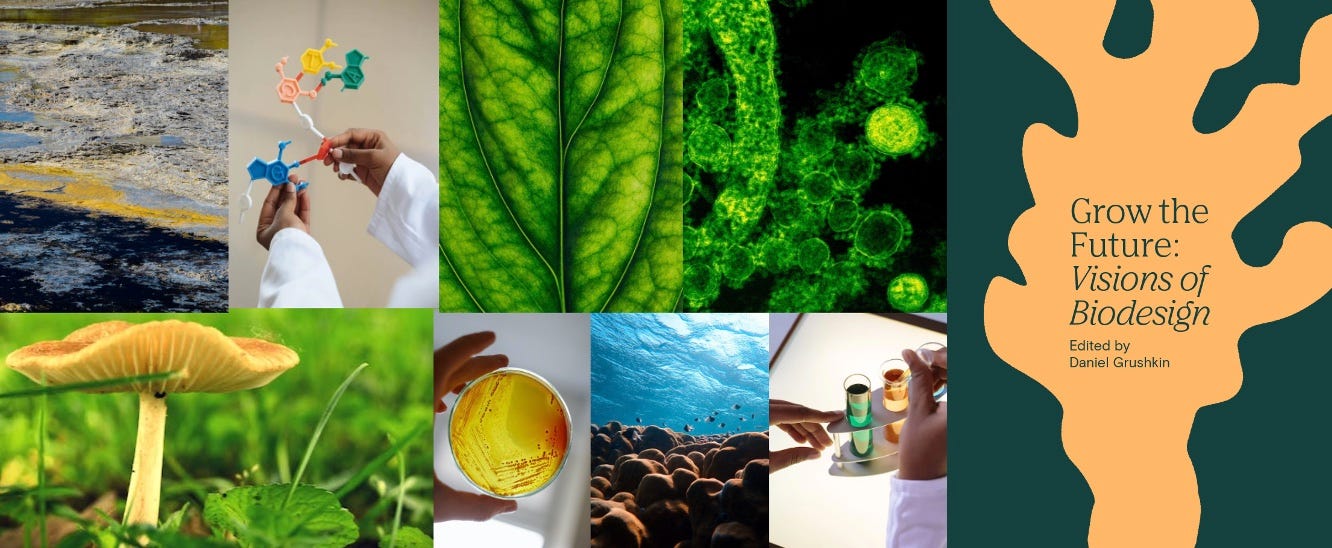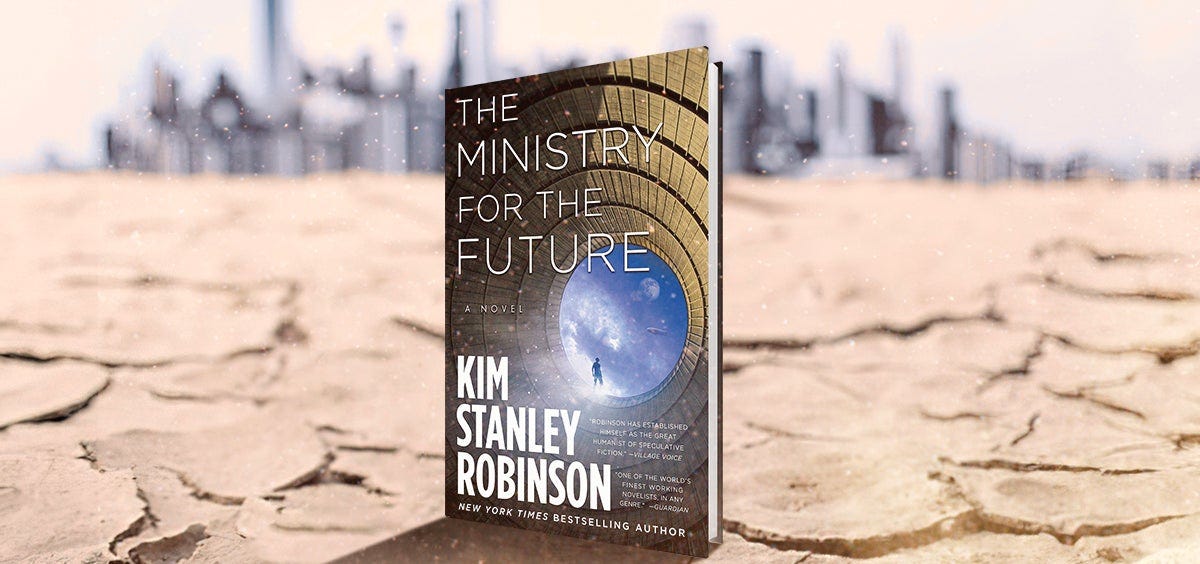🍄 Earthcore: Let's Spin Again
The global carbon capture and storage market size is expected to reach USD 5.61 billion by 2030. Finally, some breathing space.
Exploring every rabbit hole there is. For more wanderings, become an Alice in Futureland subscriber—it's free.
🍄 AudioDose: this is Alice on Sonic Mushrooms. Take a spin HERE.
🎧 Solarpunk AgTech with Agam Khare, CEO & founder Absolute Foods
🎧 Alice in Futureland Podcasts
(Photo by Mike from Pexels)
Hello, we’re Alice and we are always in a state of wander. Solarpunk sets the scene, energized by artists and authors futurescaping a healthy, plump planet. They retell today’s grim tale with a fairytale ending and paint over tomorrow’s problems with forward-thinking anthologies and technologies. The door closes on climate doom. And now Earthcore enters the chat. Inspired by Solarpunk’s ideology, this grounded and capable cousin sets out to do the heavy lifting. With an innovative roadmap to reduce greenhouse gas emissions and an abundance of renewable energy, they build new concepts, contraptions and cuisine. And start to assemble a new infrastructure for the planet’s living room.
The World, Who Wants It?
‘There isn't “the future” that we're doomed to enact. There are all kinds of possible futures. And which one we're going to get is going to depend on what we do now.’ — Margaret Atwood, 2022.
From the climate emergency a new world emerges. One where energy users become energy providers to capture carbon and protect natural habitats. From foresters to grassroots movements, the entrepreneurs, inventors and investors hoist up a flag of hope not fear.
They move from a scarcity to abundance mindset that’s been described as “pragmatic optimist.” Meaning, optimism about your future and pragmatic about what you need to do to get there. It’s a blend of realism and hope. Pragmatic optimists are reimagining carbon as an energetic exchange—a regenerative, abundant resource to capture (not harvest) superior feedstocks and new materials.
Calling all Solarpunks
The Solarpunk movement tries to think our way out of catastrophe by imagining a future most people would actually like to live in, instead of ones we should be trying to avoid. And it is having a resurgence in our climate-anxious world.
The Solarpunk manifesto, which first took the spotlight in the late 00’s, says we should ‘equitably manage resources and share abundance and be kinder to each other and the planet we share.’ There is an overlap between Solarpunk and the aesthetic of Afrofuturism that blends the African diaspora with science, philosophy and technology. Afrofuturism, like Solarpunk, embraces inclusivity, biodiversity and climate justice for all.
Footprint, handprint, soulprint
Solarpunk aims to cancel climate change, rewild our biodiversity and improve social equity. Climate-tech entrepreneurs and advocates are pushing a new climate transition agenda—and adopting a Solarpunk view. Biodesigners, bioengineers and pragmatic optimists are working to transition us to all renewable energy and shift towards a regenerative economy system that champions carbon capture. Today, we are making edible proteins from air; and developing a carbon-captured catalog of everything from diamonds to soap.
Janine Benyus, biologist and co-founder of the Biomimicry Institute, may just be an original Solarpunk at heart when in 2002 she poised this to ALICE:
“ Those leaves are taking carbon dioxide out of the air, with sunlight and water, and making starches and sugars. Why aren’t we taking carbon dioxide, which we have a lot of right now, and making plastics, making biodegradable plastics out of carbon dioxide? I mean isn’t that what, bacteria for instance did, when they had too much of any one thing, oxygen for instance? They don’t say, we say, as humans we say, ‘carbon dioxide, bad’. The appropriate response is ‘carbon dioxide, a lot—food!’”
Here Come the Biotopians
We are on the cusp of a new frontier, and it is one that is biodesigned. As we better understand the molecular biology of life, there’s really no limitations as to what we can get living things to do. You see, living things can be used as factories to create any molecule. Yes, any molecule. And since molecules are the basis for everything we construct, biodesigners are engineering technologies for every single purpose they can imagine—constructing new materials, new substances, new foods.
Not since the dot-com boom has there been such excitement about future pockets of rapid growth. Welcome to the “bioeconomy” —all the new and innovative ways we are producing food, products, and energy, using biology as our tools, including the handiwork of microbes. Some experts estimate the direct economic impact of bio-based products, services, and processes at up to $4 trillion per year globally over the next 10 years.
🔅See biotopians in action at the Biodesign Challenge, an education program and competition shaping the first generation of biodesigners.
Credit: New York Review of Books
The original solarpunk: Freeman Dyson, theoretical physicist (1923 – 2020)
Ten years ago, in his speculative New York Review of Books essay “Our Biotech Future,” theoretical physicist Freeman Dyson imagined a time when life-forms, not just startups, might be hatched in garages; when reptile breeders could fashion design lizards; and children could create their own playthings. He posited a “bright future for the biotechnology industry when it follows the path of the computer industry, the path that von Neumann failed to foresee, becoming small and domesticated rather than big and centralized.” We at Alice in Futureland couldn’t agree more. As biotechnology makes its way into our products and our homes, we will have at our fingertips the means to self- produce new medicines, materials, foods, and energy sources using the elegant and industrious biological processes of bacteria.
Credit: GatesNotes
The Future Is Not So Tense
Described by Bill Gates as “a scary but hopeful novel about climate change,” comes The Ministry for the Future [2020] from celebrated cli-fi novelist Kim Stanley Robinson. Set fifty years in the future, Robinson uses fictional eyewitness accounts to tell the story of how climate change will affect us all. The “turbulent 20’s or the terrifying twenties” are described as “critical years.” ‘You have to imagine what it felt like at the time, when panic filled the air and no one could be sure that success was even possible,’ he writes. The story tells the “history” of how humanity ended the climate crisis and restored the damage done to Earth's biosphere. ‘Robinson has written a novel that presents the urgency of this crisis in an original way and leaves readers with hope that we can do something about it,’ Gates reviewed on his GatesNote blog.
Leading Indicators:
💨 The Coming CDR (Carbon Dioxide Removal) Index
The Ministry for the Future novel featured “carboni,” a reserve currency backed by global central banks. It’s inspired by Global Carbon Reward, a carbon currency being proposed by Australian civil engineer Delton Chen to incentivize businesses to cut carbon emissions, develop cleaner business models and remove carbon from the atmosphere. If successful, a policy such as this could establish and fund a new economic sector dedicated to carbon dioxide removal (CDR).
💨 Eats Shoots and Breeze: Air is Food
Sky’s the limit for Air Protein , a company with plans to sustainably eliminate food scarcity. Founder Dr. Lisa Dyson unearthed a long-forgotten way to feed astronauts, first discovered by NASA scientists in the 1970s. Now they’re making Carbon Negative “air meat,” packed with vitamins, minerals and nutrients, all nine essential amino acids and twice the amino acids of soybeans.
💨 Air is material
Creating big change for brands such as BMW and Audi AG, Made of Air is a carbon-negative material maker replacing aluminum and plastic. The magic ingredient is biochar from wood waste. It can be used in everything from buildings to furniture to automotive parts and presents a durable alternative to the plastics.
💨 CO2-recycled suds
CleanO2 makes silky-smooth soap bars from captured greenhouse gas “so every bar is climate action in progress.” And Unilever is pioneering a new process: capturing waste CO2 from a factory – before it reaches the atmosphere – and turning it into a cleaning ingredient for its OMO detergent.
💨 CO2-sequestering clothing:
NC State researchers developed a new textile-based carbon capture technology. The fabric is made of cotton and enzymes that can easily pull carbon dioxide molecules from the air.
The H&M Carbon Looper project has come up with a method in which cotton textiles can be treated with an amine-containing solution that makes the surface of the fabric capture carbon dioxide from the surrounding air (a process known as adsorption).
💨 ✈️ I’m leaving on a carbon-neutral jet plane:
By 2024, airplanes may run on carbon neutral fuel made with captured CO2 and renewable energy. It looks and acts like standard jet fuel, but when it burns, is carbon neutral. NY-based startup Air Company is beginning to take orders from airlines including Jet Blue and Virgin Atlantic. Berkeley, California startup Twelve announced a collaboration with Alaska Airlines and Microsoft to advance production of Twelve's E-Jet, a lower-carbon jet fuel.
What else we are wondering
🧠 From air to sea…
New Scientist reports carbon dioxide captured from the air could be turned into baking soda and stored in the world’s oceans, thanks to a newly identified material that researchers say could revolutionize the direct air capture (DAC) industry.
🧠 Climate Capital
‘Fixing the planet is good business,’ comes the rally cry from Carbon Equity, a fintech company calling on investment for the planet’s future. Just five years from now, PitchBook estimates the climate tech market will near $1.4 trillion, and TechCrunch reviews the six climate tech trends to watch for in 2023.
🧠 AI climate negotiators
Debating 100-years worth of policy in seconds. A simulation consisting of 27 AIs representing different regions in climate negotiations is part of a competition to find out which policies and incentives could have the best chances of success.
🧠 And if you are wondering what ChatGPT thinks of AI and climate tech, read the GreenBiz interview here.
👁🗨 Or watch what our near future may be on Apple TV’s Extrapolations series. Eight interconnected stories told over 33 years explore how our planet’s changing climate will affect family, work, faith—and survival.
Craving more?
📘 Alice in Futureland books
🧠 Alice on the syntropocene era of people, planet, and prosperity.
🎧 Alice in Futureland Podcasts
🎧 Solarpunk Agtech with Agam Khare, founder & CEO, Absolute Foods
👁🗨 Photosynthesis & carbon capture with Janine Benyus, from our archives
👁🗨 Nature as teacher with Janine Benyus, from our archives
👁🗨 Mars habitat with Freeman Dyson, from our archives
Thanks for tuning in.
For more wanderings, become an Alice in Futureland subscriber—it's free.
Invite your friends to this mad tea party and let's see how many things we can learn before breakfast.
©2023 Alice in Futureland









The future is full of possibilities - carbon capture will open many doors yet unseen.